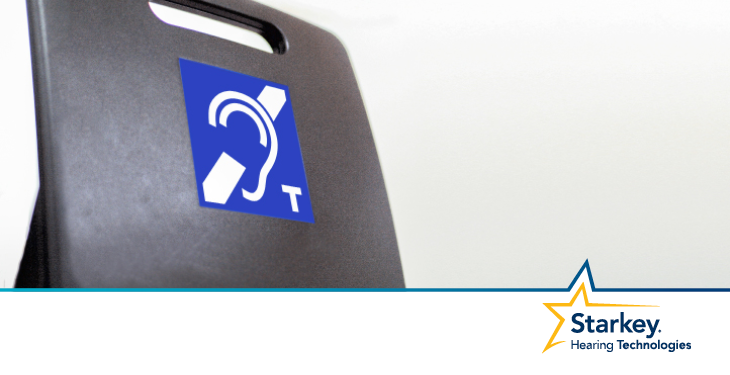A telecoil or t-coil is a component that is added to hearing aids to expand the function of the hearing system. It is literally a copper wire that is coiled and placed in the hearing device. When it was first introduced it worked with landline telephones, hence the name telecoil.
How does a telecoil work?
Normally, a hearing aid has a microphone, amplifier and a receiver. The microphone “listens” to the environment, the amplifier processes the signal from the microphone, and the receiver presents the signal to the ear. The telecoil is an optional piece that many hearing aids have, like our new Muse iQ Rechargeable.
When you have a telecoil, it can “listen” instead of the microphone. The coil inside the hearing aid is sensitive to magnetic fields. If a phone has a strong enough magnetic field, the telecoil can pick it up. Not all phones have a strong enough field, so some phones put a matching coil in the receiver.
If a telephone has a coil, it will create a magnetic signal to send to the coil in the hearing aid. This allows the hearing aid and the phone to connect via the coils. When this connection takes place, the hearing aid will take the signal from the phone, via the coil, send it to the amplifier to be processed and then present it to the ear via the receiver. All of this bypasses the microphone.

Using a telecoil with a telephone
In today’s hearing aids, there are two ways for you to access the coil in your hearing aid. The first is by pushing a button or switch on the hearing aid or a remote to select a specific memory. This is called a “Manual telecoil”. Some telecoils are automatic and are called “Auto-Coil”.
When a phone with a matching coil is close enough to the hearing aid, the coil in the aid senses the presence of the phone and automatically switches to the coil memory. When the phone is taken away, it switches back.
In both of these cases, your hearing healthcare provider activates or turns on the coil in your hearing aid when you are first fit. They create a special memory or program that uses the coil and can be customized based upon your listening needs.
The advantage of using a telecoil memory is that it decreases feedback and background noise on the phone.
Not all telephones have telecoils
Not all phones have a coil in them. It is important to check if your phone has a coil before you ask to have your hearing aid telecoil activated.
For cell phones, if it has a “T-Rating” it has a coil that will work your hearing aid’s telecoil. The T-Rating tells how strong the coil is. The higher the rating, the stronger the coil, the stronger the signal to the hearing aid. To make sure the coil is activated in your phone, talk with your hearing healthcare provider or your cellular provider.
For landline phones and handsets, you are looking for a sign to let you know that the handset is compatible with the telecoil in your hearing aid. This sign identifies handsets/phones that have decreased noise and interference when used with a telecoil in a hearing aid.

Other uses for telecoils
While telephones were the first use for telecoils, today, the telecoil can be used with several other technologies. One of the most common use of a telecoil today is a “Loop System”. When you see the sign above, it means that space has a Loop System.
A Loop System is most often done in larger, public spaces such as houses of worship, theaters or meeting rooms. It means that the space, basically, has a big coil that will connect to the telecoil in your hearing aid. So when someone is talking on the sound system, you can hear them through the telecoil in your hearing aid. This system can improve hearing and understanding in these spaces.
If you plan to use your telecoil with a loop system, make sure your hearing healthcare provider is aware. They may set the program up differently than they would for a phone and you will need to be able to manually access the program.
To learn more about telecoils and how they may help you, talk to your hearing healthcare provider.
Join our community of Starkey Blog subscribers
Want a week's worth of Starkey blogs delivered to your inbox? Sign up here.
